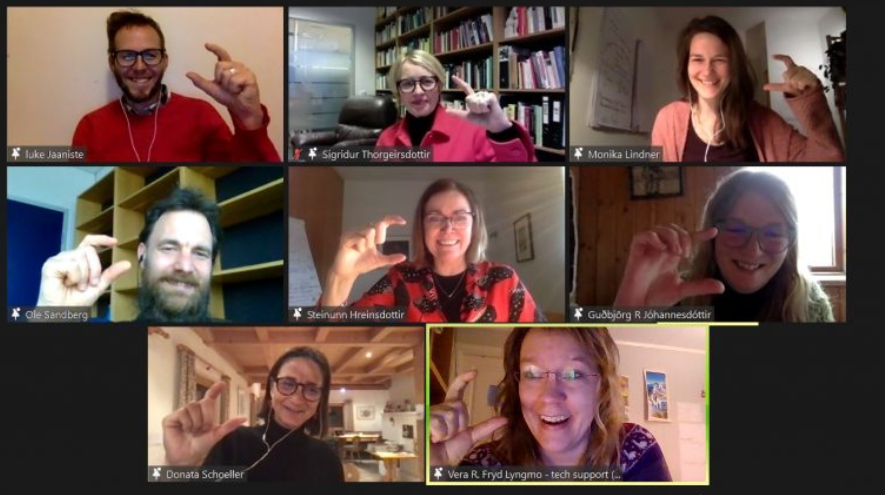Thinking at the edge in the context of embodied critical thinking: Finding words for the felt dimension of thinking within research
Among the Thinking at the Edge (TAE) trainers in the TECT project are Donata Schoeller, Sigridur Thorgeirsdottir, Ram Eisenberg and Gudbjörg R. Johannesdottir.
Training in Embodied Critical Thinking (TECT) (ect.hi.is) is an interdisciplinary training program initiated by philosophers, computer scientists, cognitive scientists, and environmental designers. It has been awarded the European Erasmus + grant for Strategic Partnership in Higher Education. TECT offers a fresh take and novel methodologies for students and researchers to think critically and creatively, contributing to the transformation and enrichment of the skill of critical thinking in the 21st century. In this context, TAE is used in a year-long training program (trainingect.com), in which five universities participate: Philosophy Department of the University of Iceland, Center of Cognitive Science of the University of Ljubljana (Slovenia), Cultural Studies at the University of Applied Sciences in Jena (Germany), Artificial Intelligence and Brain Modelling at the University of Groningen (Netherlands), Landscape Architecture at the University Technion (Israel).
The training program (trainingect.com) is for graduate students, for postgraduates, for researchers, as well as for faculty. In average 100 people apply, 25 are chosen. Around 30 graduate students and researchers finish the 15 ECT-credit program every year. The participants of Training in Embodied Critical Thinking come from Europe, but also from North and South America, from Israel and Palestine, etc.
THIS ARTICLE by Donata Schoeller reflects TAE's use and applications possibilities; how and why TAE as a method is used in the context of academic research.

